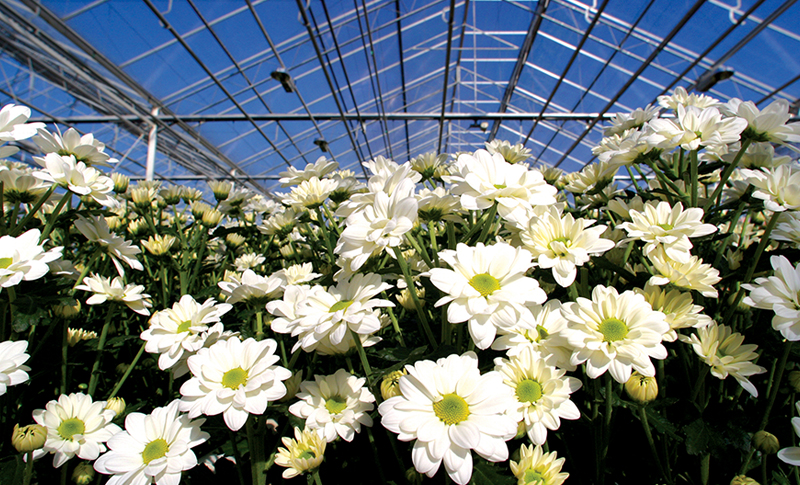Floriculture

- Oklahoma State FFA Floriculture Plant Index
- The Meaning of Flowers (From the Old Farmer's Almanac)
- Floriculture, or flower farming, is a discipline of horticulture concerned with the cultivation of flowering and ornamental plants for gardens and for the floral industry.
- Floriculture crops include bedding plants, flowering plants, foliage plants or houseplants, cut cultivated greens, and cut flowers.
- Bedding and garden plants consist of young flowering plants (annuals and perennials) and vegetable plants. They are grown in cell packs (in flats or trays), in pots, or in hanging baskets, usually inside a controlled environment, and sold largely for gardens and landscaping.
- Floriculture is one of the fastest-growing agricultural enterprises in Oklahoma.
- In 2005, floriculture ranked number 9 of all Oklahoma ag commodities.
- In 2005, the floriculture industry in Oklahoma was 56 percent herbaceous perennial plants, 31 percent annual bedding plants and 13 percent potted flowering plants.
- Floriculture in Oklahoma takes place in greenhouses, under shade and temporary cover and on open ground.
- Easter lilies and poinsettias account for the largest quantity of potted flowering plants in Oklahoma's floriculture industry.
- Begonias, geraniums, impatiens and petunias are the best-selling flowering hanging baskets grown in Oklahoma.
- Begonias, geraniums, impatiens, marigolds, pansies, and petunias are the best-selling bedding plants in the Oklahoma floriculture industry. Geraniums, impatiens, petunias, pansies/violas and begonisa are the best-selling bedding plants in the US.
- Potted plants grown in Oklahoma include begonias, geraniums, impatiens, petunias, mums and hostas.
- Chrysanthemums are the major perennial garden plant in the United States.
- Flowering plants are largely sold in pots for indoor use. The major flowering plants in the US are poinsettias, orchids, florist chrysanthemums, and finished florist azaleas. Foliage plants are also sold in pots and hanging baskets for indoor and patio use, including larger specimens for office, hotel, and restaurant interiors.
- Cut flowers are usually sold in bunches or as bouquets with cut foliage. The production of cut flowers is specifically known as the cut flower industry.
- Farming flowers and foliage employs special aspects of floriculture, such as spacing, training and pruning plants for optimal flower harvest; and post-harvest treatment such as chemical treatments, storage, preservation and packaging.
- Plant breeding, the development of new varieties, is a major occupation of floriculturists.
- Before the 1800s, researchers calculate that a flower's scent could travel between 3,280 feet and 4,000 feet. Today, that scent might travel 650 feet to 1,000 feet in highly polluted areas such as the District of Columbia, Los Angeles or Houston.
